- News
- Reviews
- Bikes
- Accessories
- Accessories - misc
- Computer mounts
- Bags
- Bar ends
- Bike bags & cases
- Bottle cages
- Bottles
- Cameras
- Car racks
- Child seats
- Computers
- Glasses
- GPS units
- Helmets
- Lights - front
- Lights - rear
- Lights - sets
- Locks
- Mirrors
- Mudguards
- Racks
- Pumps & CO2 inflators
- Puncture kits
- Reflectives
- Smart watches
- Stands and racks
- Trailers
- Clothing
- Components
- Bar tape & grips
- Bottom brackets
- Brake & gear cables
- Brake & STI levers
- Brake pads & spares
- Brakes
- Cassettes & freewheels
- Chains
- Chainsets & chainrings
- Derailleurs - front
- Derailleurs - rear
- Forks
- Gear levers & shifters
- Groupsets
- Handlebars & extensions
- Headsets
- Hubs
- Inner tubes
- Pedals
- Quick releases & skewers
- Saddles
- Seatposts
- Stems
- Wheels
- Tyres
- Health, fitness and nutrition
- Tools and workshop
- Miscellaneous
- Tubeless valves
- Buyers Guides
- Features
- Forum
- Recommends
- Podcast
review
£7.95
VERDICT:
A cheap and satisfying way to renew that old frame or give your ride a new identity
Weight:
400g
Contact:
At road.cc every product is thoroughly tested for as long as it takes to get a proper insight into how well it works. Our reviewers are experienced cyclists that we trust to be objective. While we strive to ensure that opinions expressed are backed up by facts, reviews are by their nature an informed opinion, not a definitive verdict. We don't intentionally try to break anything (except locks) but we do try to look for weak points in any design. The overall score is not just an average of the other scores: it reflects both a product's function and value – with value determined by how a product compares with items of similar spec, quality, and price.
What the road.cc scores meanGood scores are more common than bad, because fortunately good products are more common than bad.
- Exceptional
- Excellent
- Very Good
- Good
- Quite good
- Average
- Not so good
- Poor
- Bad
- Appalling
Spray.Bike paint is a great way to refresh or personalise your bike. It works on any frame material, is easy to use, and with a bit of practice delivers great results for not much money at all.
Historically, if you scratched your bike to bits or wanted to tart up an old, tired frame you had two options: pay a professional a few hundred quid, minimum for an as-new result, or purchase a can of Hammerite from a DIY shop and bodge on. The Greco-British team behind Spray.Bike spotted this gap in the market and spent several years reinventing spray paint specifically for bikes.
> Find your nearest dealer here
Originating in Athens where local shop Vicious Cycles got fed up with the poor experience using automotive spray paint on bikes, they contacted the local paint manufacturer and a partnership was born. London's Brick Lane Bikes got involved testing early samples, and a three-way partnership evolved to take the idea to market. What Spray.Bike now has is a complete ecosystem of preparation, paint and finishing products that lets you get close to professional results in your own garage for a fraction of the cost.
The Spray.Bike range includes 48 colours, plus a fibreglass putty, a spray-on smoothing putty for minor scratches, and a transparent topcoat finish that gives you matt or satin depending on one or two coats. The five colour ranges cover twee vintage UK to pop-art/fluoro, so there's something for everyone. There are also smaller cans for detail work and a semi-transparent product range for spraying over raw metal.
Keep your powder dry
At the heart of the Spray.Bike proposition is the technology to basically give you powder coating in a can. This powder coating-like technology is great as it dries quickly and is much less likely to run than normal spray paint. You still need to mask your bike correctly, as it does travel and the 'dust' from the paint particles that don't stick to the bike gets everywhere – do not do this somewhere you need to keep clean.
The plan was to rejuvenate my 80s steel cyclo-cross frame (a Belgian Diamant, made from triple-butted Ishiwata Cromo if you must know) in the design of what should be in any sane universe New Zealand's next flag, 'First To The Light', a brilliant design that works on so many levels it's genius, but I digress. The first step was to get the frame and fork shotblasted clean, which cost £15 at a local engineering firm. You can pay a lot more for the same result, so ring around and don't rely on bike-specific outfits if you want to save cash.
Use the opportunity to check the frame over for any cracks or corrosion. Once cleaned up, the act of planning and masking the frame began. Pay attention here as thinking the paint order through correctly can save a lot of time later. I used normal household paint masking tape, which came away easily and could be trimmed to fine points/sharp edges.
Keep your distance
Following the instructions is key – maintaining the optimal distance of 5-10cm is critical, as too close and the paint can run if oversprayed, too far and the finish ends up not being smooth. After a few passes you get a feel for it, so I'd recommend practising on some old pipe or whatever. You really need to mask the rest of the bike properly – I used newspaper and the masking tape itself to cover over everything, and dabs of grease to protect threaded bosses and fiddly bits where tape/paper wasn't a good option. I waited 20 minutes between coats, so with three colours to apply and adjust the masking in between, the whole process took maybe four hours end to end.
Afterwards, there were a few spots that needed rubbing down – Spray.Bike recommends a soft lint-free cloth to smooth out any rough spots, but don't rub too hard; I wore through a layer of paint being a bit vigorous and had to touch it up using a bit of paint and a brush, which worked out okay. After things were done I applied three coats of the Transparent Finish, which does behave differently and, like traditional spray paint, is much more likely to run – so easy does that.
As you can see from the photos, for a first crack at home painting it looks great. Certainly from more than a few feet away you can't tell it's a home-done job, and as it's a FrankenGruppo-San bash-about bike designed to get filthy I'm not too fussed about the few places I could have done better. Around the mudguard bosses I probably laid it on a bit thick, and then when removing the grease protecting the threads the overly thick layer of paint chipped away, so for fine areas like that focus on thin layers with only the central thread protected.
What Spray.bike is not is a miracle cure, and you'll need to protect areas prone to chipping like the top of the chainstay with a clear layer of tape. If you do pick up any chips or scratches, the spray-on Frame Builder's Smoothing Putty goes on and sands down, leaving a base to respray.
At £7.95 for the 400ml cans and £4.95 for the 200ml, it's not a huge outlay. I did three coats of each colour on this frame with about a third left in each 400ml can – so three coats of one colour on a frame/fork might take two cans. Including the shotblasting and a roll of masking tape, that's a new four-tone paintjob with clear coat for less than 60 quid, with the satisfaction of being your own artist. The Spray.Bike website features how-to videos and tips for creating special finishes, only limited by your imagination.
Overall, Spray.Bike is a great low-cost way to renew that commuter, pub or hackabout bike. With attention to detail and a bit of practice/planning you could knock out a real Sunday Run head-turner.
Verdict
A cheap and satisfying way to renew that old frame or give your ride a new identity
road.cc test report
Make and model: Spray.Bike paint
Size tested: 400ml
Tell us what the product is for, and who it's aimed at. What do the manufacturers say about it? How does that compare to your own feelings about it?
It's for anyone wanting to tart up their bike, without paying a fortune.
The story of Spray.Bike
Spray.Bike is a collaboration between three different companies:
Brick Lane Bikes – a major international manufacturer, retailer and wholesaler in the bike industry, based in London
Vicious Cycles Athens – an urban bike workshop in the centre of Athens, Greece
Cosmos Lac – a high-tech paint manufacturer based in Greece
Spray.Bike was created out of frustration with existing products. if you're not an experienced pro, it's so difficult to use metal or car spray paint on bikes. It drips and dribbles and is extremely hard to control. And professional electrostatic or powder coating can get super expensive.
At VCA, while trying to repair a damaged frame using a standard RAL spray, we were so disappointed with the results that we phoned up the manufacturer, which happened to be Cosmos Lac. 'Well what do you want the paint to do?' was the reply.
After 2 years of development, Spray.Bike is the answer.
VCA and Cosmos Lac sent samples over to Brick Lane Bikes in London for their highly trusted opinion. From the moment they tried it, they wanted to be part of the excitement too.
A modern business venture with partners in different corners of Europe, Spray.Bike is a true collaboration of strengths.
Tell us some more about the technical aspects of the product?
Tech spec
Highly pigmented acrylic paint compound
Dry-fall powder coating
Non-drip, non-dribble formula
No primer required
Suitable for steel, aluminium and carbon surfaces
Permanent and resilient: UV-resistant and weather-resistant
Solid colours with deep matte finish and semi-transparent glazes
Optional transparent finish: matte (one coat) and satin (two coats)
Colours and finishes perform together in all combinations
Easily-achieved fading, stenciling and blending effects
Requires no post-application equipment or treatment
400ml and 200ml options
Instructions for use
Ensure surface is clean and dry
Wear protective gloves, protective clothing, eye/face protection
Always paint in an open space in the open air
Shake can for at least 3 minutes before use
Test spray for 2-3 seconds prior to application
Spray surface from a distance of 5-12cm (note: 30cm for the Transparent Finish)
When spraying, keep hand moving at all times
Allow to dry before adding 2nd coat (touch dry: 10 minutes, complete cure: 2 hours)
At end, turn can upside down and spray for 2 seconds before storing
Protect can from sunlight and temperatures exceeding 50°C/122°F
Spray.Bike paint lasts in its can for up to 10 years. Store upright and below 50°C so it will always be there for scratches and touch-ups.
Rate the product for quality of construction:
9/10
The packaging, cans and powdercoat nature of the product are excellent.
Rate the product for performance:
9/10
Compared to normal spraypaint, it's genius.
Rate the product for durability:
6/10
The one area I'd mark it down – the nature of the paint is not inherently tough.
Rate the product for value:
8/10
For the money it's a cracking bike product.
Tell us how the product performed overall when used for its designed purpose
Very well.
Tell us what you particularly liked about the product
The lack of dribbling.
Tell us what you particularly disliked about the product
Prior to clear-coating, the finish is a bit fragile – more so than normal acrylic spray paint. Just be aware.
Did you enjoy using the product? Yes
Would you consider buying the product? Yes
Would you recommend the product to a friend? Yes
Use this box to explain your score
It's not 100% idiot-proof (what is?) and practice is required to ensure you don't screw up prior handiwork. And you really do need to clear-coat it once done.
About the tester
Age: 43
I usually ride: Merida Ride 5000 Disc My best bike is:
I've been riding for: Over 20 years I ride: A few times a week I would class myself as: Expert
I regularly do the following types of riding: cyclo-cross, club rides, general fitness riding, mountain biking, Dutch bike pootling
Living in the Highlands, Mike is constantly finding innovative and usually cold/wet ways to accelerate the degradation of cycling kit. At his happiest in a warm workshop holding an anodised tool of high repute, Mike's been taking bikes apart and (mostly) putting them back together for forty years. With a day job in global IT (he's not completely sure what that means either) and having run a boutique cycle service business on the side for a decade, bikes are his escape into the practical and life-changing for his customers.
Latest Comments
- Tony W. 10 min 18 sec ago
The bus driver had the responsibility to slow down and look to make sure it was safe to turn, looking for pedestrians and cyclists (even if they...
- ErnieC 11 min ago
Agreed but I struggle to take seriously people who are are so skewed in their outrage - that just shouts bias to me.
- antigee 27 min 6 sec ago
Puts a whole new meaning to "Tour Down Under day 2"
- eburtthebike 31 min 5 sec ago
You're kidding me, right? The BBC have been anti-bike for as long as I've been interested, something over forty years. I can't explain it, I don...
- Joe Totale 1 hour 59 min ago
The only good thing about Muc Off lube is that it smells nice. Honestly that stuff seems to attract all of the crud the bike goes near and coates...
- redimp 2 hours 25 min ago
This is a tad cheaper https://www.aliexpress.com/item/1005007112974070.html?spm=a2g0o.productl...
- chrisonabike 3 hours 15 min ago
They should get ColdWarSteve in to do 'em.
- chrisonabike 3 hours 19 min ago
Most of this is reasonable advice - and if you have a very regular route the "get together with others" advice is good. For general use you missed...
- cmedred 4 hours 10 min ago
Chose not to? Isn't the appropriate prhase there "refused to comment.''
- Rendel Harris 6 hours 2 min ago
The system is that the ban given is served from the moment the driver is disqualified, i.e. at sentencing, but it must be extended from whatever...





























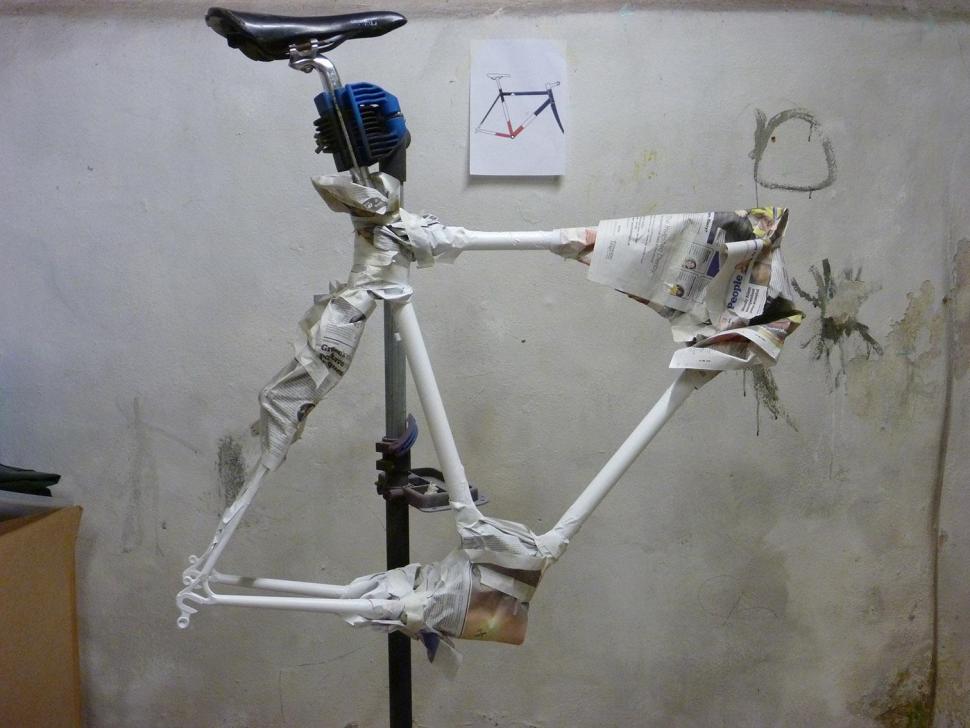
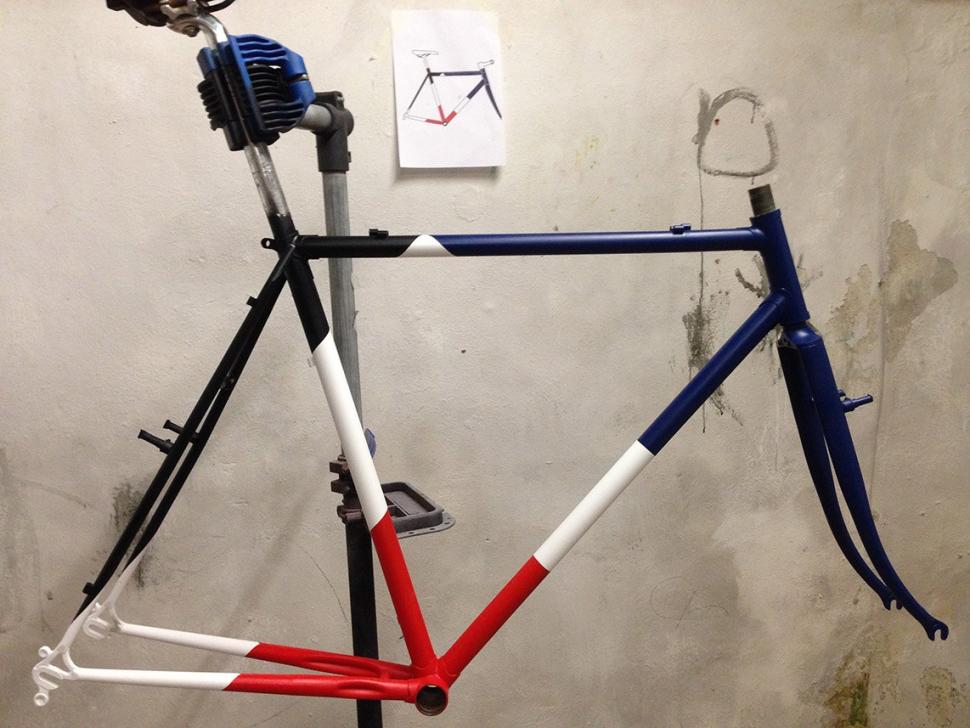
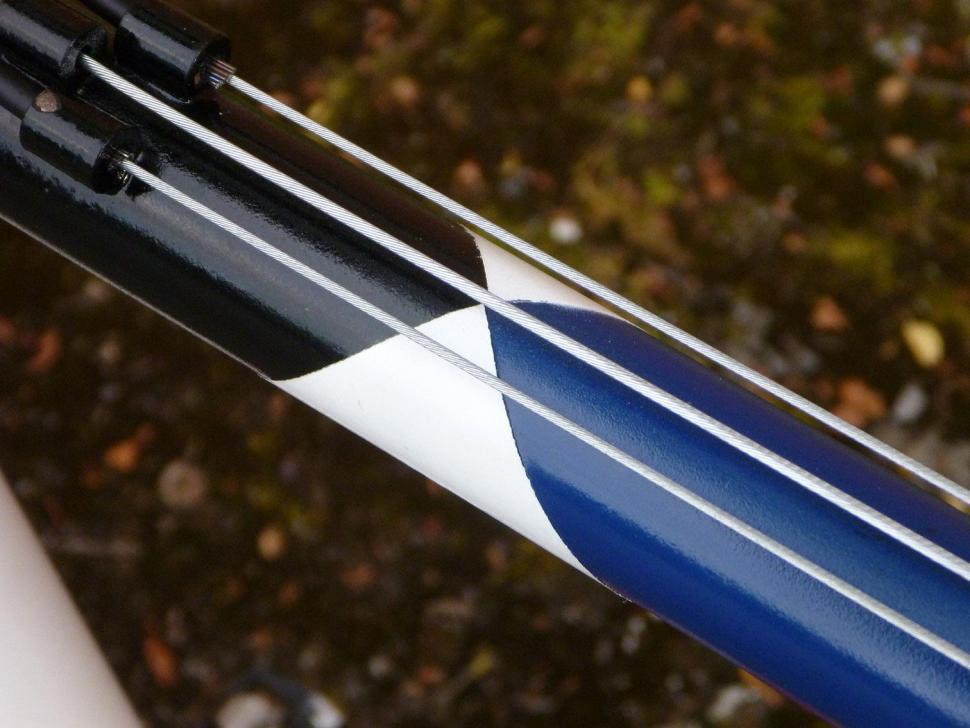
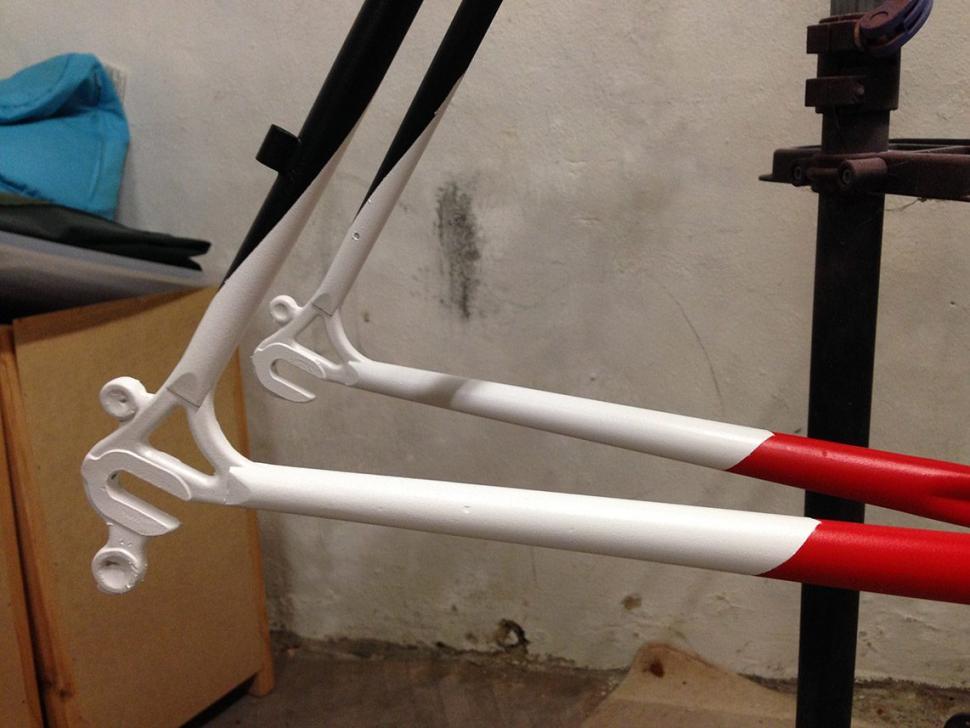
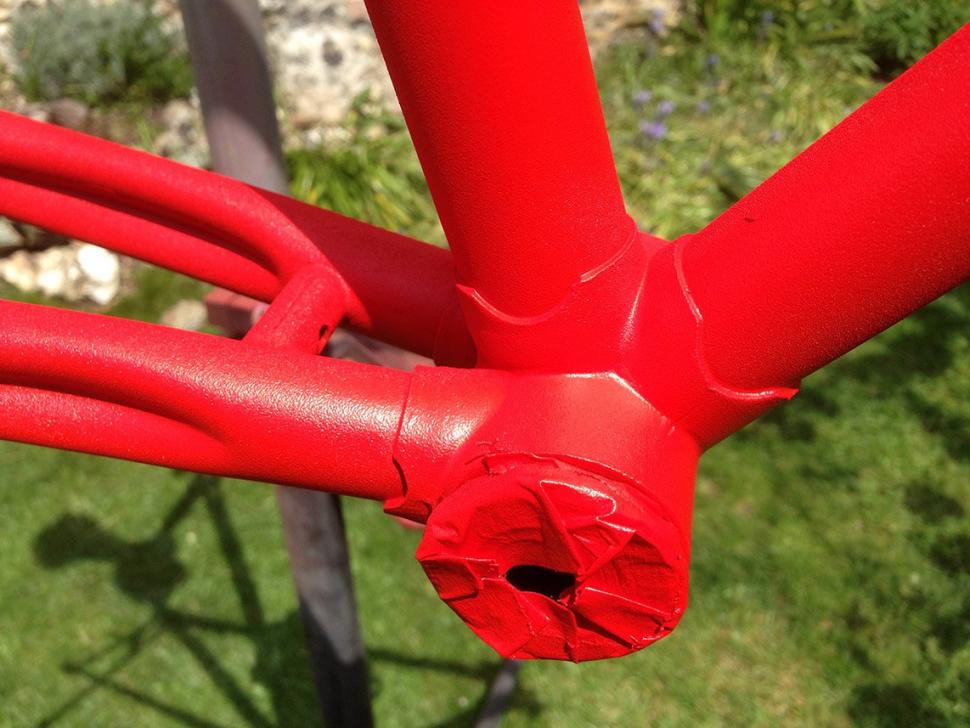

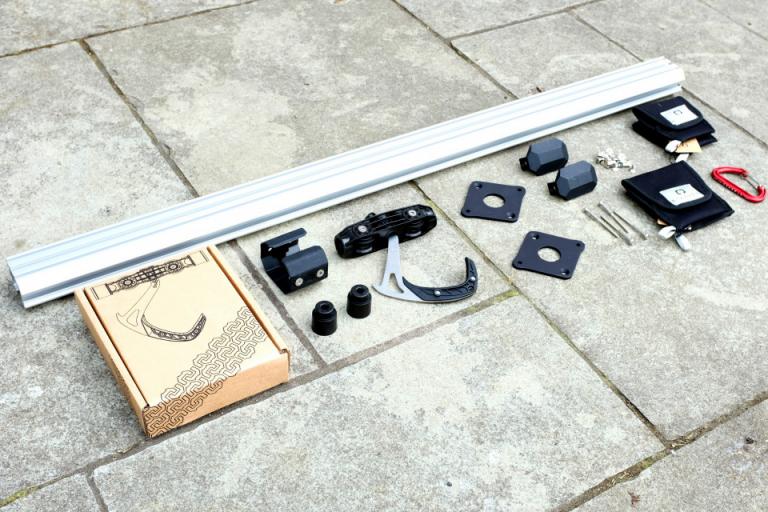
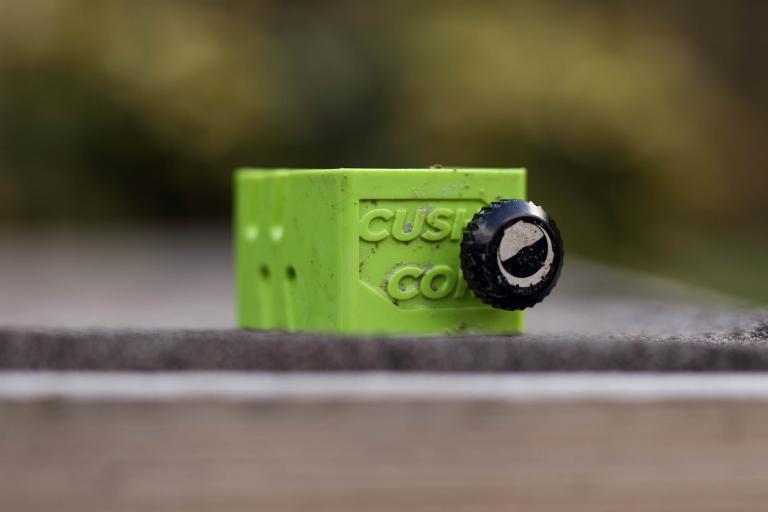

Add new comment
18 comments
"The first step was to get the frame and fork shotblasted clean, which cost £15 at a local engineering firm. You can pay a lot more for the same result, so ring around and don't rely on bike-specific outfits if you want to save cash."
You DO NOT need to do this. The whole point of this stuff is that it isn't paint and doesn't require a bare surface. On their website they recommend a light sanding with sandpaper first, but that's all. If anything, keeping the original paint provides an extra layer of protection for the frame.
I just re-sprayed the chainstays to tidy up a frame that had a few too many scratches and chips to just touch up.
Having admired my handiwork, I then scraped the inside of the chain stay back to bare metal with the edge of the brake disk putting the wheel back in
Top tip - tape the inside of the chain stay, too!
Or just be more careful. I've never hit the inside of my chainstay with the disc, and how hard were you doing it to scratch it that deeply? Unless this stuff is really weak.
When I were a lad, we spent no end of weekends stripping down bikes, painting them whatever colour was in the throwout bin at the local car factors and then riding the garish monstrosities we created to destruction down the local woods.
I did have a rather nice Raleigh in 2 pack epoxy metalflake green that I kept for years.
The best paint I ever had was brought home by my Dad who worked in the technical coatings industry. A tin of the white paint used on Concorde.
These 'skills' seem to be sadly lost on my own kids who's idea of customising anything seems to involve getting a new skin for some weapon or other on a computer game. I have failed as a parent and role model.
Yep - there's nobody to blame for that situation but the parents.
My 3-yr old daughter was quite interested in what I was doing and actually wanted to have a go at the spraying - wasn't that fussed about the quality of the finish, so let her have a go and it was fine until she lost interest.
Probably partly motivated by the fact I was using her swing to hang the frame up instead of doing it in the garage.
Only because you think they should be doing exactly what you were doing decades ago, and that you think what you did has more value than what they do. You've become a cliche old fart.
£60?
I'm all for DIY - in fact, I'm one of the stingiest bastards around when it comes to saving money.
However, you could get a pro job done for not much more, if not a similar price. £60-£100, anyway, depending on whether you want decals.
Agree, £65 gets you a paint strip/bead blast, visual inspection for frame damage, masking off of threads etc and a 5 year guarantee Powder Coating job by professionals. That price is frame AND forks for a steel frame.
Lol, good luck with your £60 powder coat job. Have fun re-threading all those areas they didn't mask off properly.
I painted an old bike I bought for my then GF for her to cycle to her PT job in a lovely rusty brown colour, whilst we were at college together. Some leftover car paint in her dads garage. looked like shit but got her to work, total cost, sweet FA. After she'd finished with it I sold it on and made £10 profit on it. that was 13 pints of bitter in those days and change over for a 'dip dab'
Would grub screws in the threads not be a more effective way of protecting them? Screw in spray screw out. Only the internals masked and nothing to pull excess paint away.
A rolled up bit of paper is just as effective.
It's cheap alright and looks it. Although the blue and black are verging on the acceptable the red matte is diabolical, any first-year paintshop apprentice would be ashamed .....
Don't be afraid to repaint a old bike, the result will look much better than you thought, even if you are a first timer.
You do indeed have to make a few trials on a spare tube to find the optimum spraying distance and bear in mind that the sprayed color can travel quite far so protect yoursef and avoid spraying near something you don't want to have tiny paint dots on it.
Road.cc has been doing it for ages; slow posting day? Just find an old article and either republish it or just put it back on the front page, old comments still included.
perhaps a review which references a 2015 referendum isn't the easiest to disguise
Isn't this review from a few years ago?